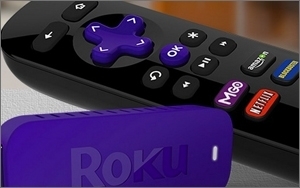
The novelty of the new will spur consumers’ holiday consumer electronics purchases this year.
Based on previous purchase patterns this year,
consumers are likely to give smartwatches and streaming media sticks as presents this year, according to research company Parks Associates. Among the connected consumer electronics devices acquired in
2014, 37% of smartwatches and 25% of streaming media devices were given as gifts.
In the streaming media category, the emergence of streaming media sticks, such as
Google’s Chromecast and Roku’s HDMI streaming stick (along with Amazon’s Fire TV stick, which won’t be available until January), could goose the category. In particular, the
Roku stick, which has the same functionality as its Roku 3 player, could really capture consumers’ attention.
advertisement
advertisement
“When you compare streaming media devices, [streaming
sticks] make great stocking stuffers,” Barbara Kraus, Parks’ director of research, tells Marketing Daily.
Meanwhile, when it comes to smartwatches, the
Apple Watch (previewed at an October event, but not yet available), ignited interest in the category, Kraus says. While it's likely that Apple loyalists will wait until the watch is released before
purchasing a smartwatch, many other consumers will be looking for other brand smartwatches this holiday season.
“If you’re set on Apple, you’ll wait,”
Kraus says. “But it’s a great small holiday gift, and it’s something new to put under the tree.”
Those two categories will be the strongest for the consumer
electronics sector, Krauss says, as intentions to buy other products such as tablets, laptops, televisions and gaming consoles are either flat or down, according to Parks’ research. Tablets,
Kraus says, have hit a flat adoption rate, where consumers will replace them as needed, and there’s no new gaming platform to excite gamers this holiday season (unlike last year, when both Sony
and Microsoft issued updated gaming consoles).
“[4K] TV adoption has been modest,” she says. “They’re new to the market. They’re going to be
adopted on a flat-panel replacement rate.”